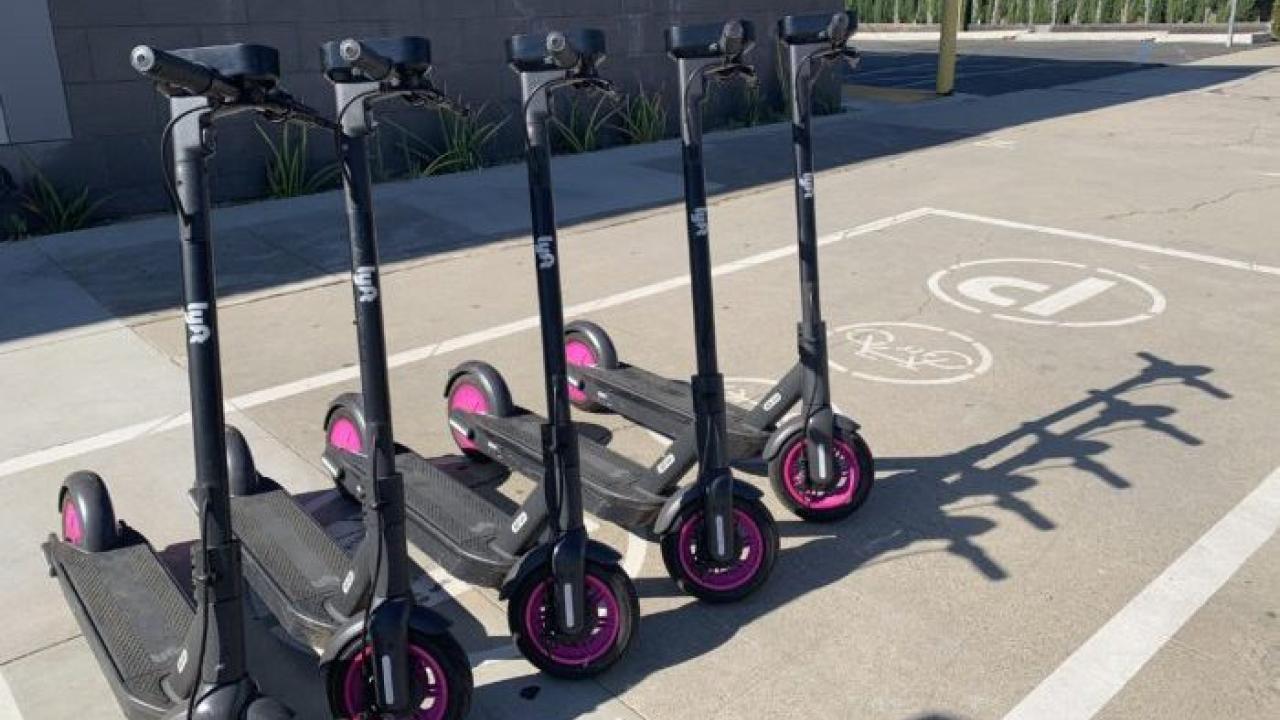The arrival of shared electric scooters and electric bikes in urban areas have expanded micromobility options and how we look at sustainable transportation. In 2019, the U.S. saw 136 million trips on shared bikes and scooters, a 60% increase from 2018. In the U.S., approximately 35% of all vehicle trips are under 2 miles. Walking, biking and, public transit have always been great alternatives for shorter trips — add micromobility options to the mix, and you reduce the reliance on cars and reduce greenhouse gas emissions. Here's how to get rolling.
Choose your Wheels
If you're on or near campus for essential work or errands, try renting an e-scooter from two of UCLA's preferred shared mobility vendors. A limited number of Lyft and Bird electric scooters are available near the residence halls, hospital, and Westwood Village. Electric bikes by Wheels, UCLA's third micromobility provider, are not available for rent on campus and in the Westwood Village at this time but will be again soon.
If you're working or learning remotely, e-scooters and e-bikes may be available near you and offered by your local city, county, or transportation agency. LA Metro has expanded bike-share options in Los Angeles, with new stations on the Westside and in Central LA. Similarly, Lyft has introduced e-bikes in Santa Monica. Navigating micromobility program rules can be confusing as you cross city boundaries. Be sure to check the safety tips and riding rules in the app of your selected provider for more guidance to avoid fees.
Pain-free Parking
Designated parking areas for your e-scooter or e-bike will be shown in the app of your selected mobility provider. If you're on campus, parking comes three ways: striped corner marks, striped parking stalls, and scooter racks. Park your wheels inside the designated area and be sure the scooter isn't blocking any pedestrian pathway or wheelchair ramp. The scooter should be upright with the kickstand down unless using the scooter rack.
Cleanliness to Combat COVID
All micromobility providers have increased their cleaning protocols for devices each time an e-scooter or e-bike is retrieved, relocated, or returned to their respective service centers for maintenance and charging. These protocols include increasing the frequency devices are sanitized and how staff members handling the devices are equipped and protected with appropriate Personal Protective Equipment (PPE).
Safety is a Priority
While the campus is closed to the general public, Bruins may want to use e-scooters to perform essential services. A lighter campus population doesn't warrant a need to speed or reckless riding behavior. Respect others who are walking by riding on the roadway and not on campus pedestrian pathways, sidewalks, or designated Dismount Zones such as Bruin Walk and Gateway Plaza. Use designated bike lanes where available or ride in the street going in the direction of vehicle traffic in your lane. Wear a helmet when riding and be cautious of downhill speeds or the presence of uneven road surfaces. These rules apply wherever you choose to ride in California.






